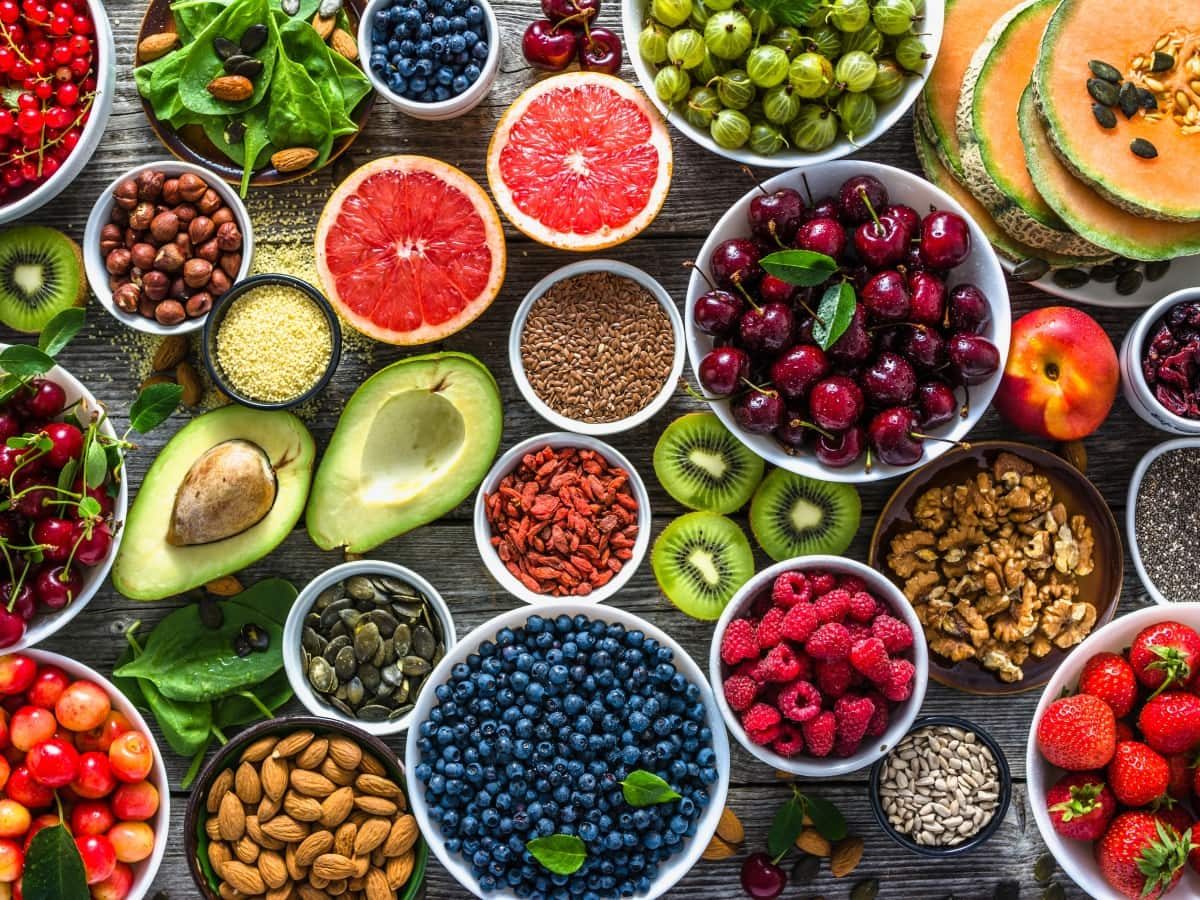For a yogi diet is an extension of yoga practice; nay, it is an integral part of yoga. A yogi should eat food that is in the mode of goodness and free from sin. Ancient wisdom says, “we are what we eat.” Therefore, if we eat food in the mode of passion and ignorance, we get a body and mind accordingly.
Purpose of food
In the Bhagavad-Gita, it says that there are three purposes of food.
a. Increase the duration of life.
b. Purify the mind.
c. Aid bodily strength.
These three attributes apply to food in the mode of goodness. In the mode of passion and ignorance, one does not get the same effect of food. He gets the opposite effect instead, and food becomes poison.
In a yogic diet, we will find two kinds of food, One which should be eaten is called pathya, and that which is forbidden is called apathya.

Pathya food (Foods that are recommended)
In the Hatha Yoga Pradipika, it is explained.
godhūma-śāli-yava-ṣāṣṭika-śobhanānnaṁ”
kṣīrājya-khaṇḍa-navanīta-siddhā-madhūni ।”
śuṇṭhī-paṭola-kaphalādika-pañca-śākaṁ”
mudgādi-divyam udakaṁ ca yamīndra-pathyam ॥65॥
Wheat, rice, barley, and everything that ripens within 60 days is good food. Milk, ghee, crystalline sugar, butter, hard sugar, honey, |
dried ginger, the cucumber fruit, [and] another five vegetables, mung beans, [and] other legumes, and rainwater, [this is food] suitable for the best of yogis. || 65 ||
puṣṭaṁ sumadhuraṁ snigdhaṁ gavyaṁ dhātu-prapoṣaṇam ।”
manobhilaṣitaṁ yogyaṁ yogī bhojanam ācaret ॥66॥
Nutritious, sweet and mild dairy products nourish the body |
and are pleasing to the mind. This is suitable food that the yogi should use. || 66 ||
Apathya foods (Foods that are forbidden)
kaṭvāmla-tīkṣṇa-lavaṇoṣṇa-harīta-śāka-”
sauvīra-taila-tila-sarṣapa-madya-matsyān ।”
ājādi-māṁsa-dadhi-takra-kulatthakola-”
piṇyāka-hiṅgu-laśunādyam apathyam āhuḥ ॥61॥
Bitter, sour, biting, salty, spicy, green vegetables, sour oatmeal, sesame oil, sesame, mustard, alcohol, fish, |
Goat, other meat, sour milk or milk mixed with water, horse bean, jujube fruit, oil cake, devil droppings, garlic, and other things are unsuitable [food for a yogi], they say. || 61 ||
bhojanam ahitaṁ vidyāt punar asy[a]-{o}[u]ṣṇī-kr̥taṁ rūkṣam ।”
atilavaṇam amla-yuktaṁ kadaśana-śākotkaṁ varjyam ॥62॥
[A yogi] should seek to avoid unflattering food. [This also includes:] |Warmed, reduced-fat products, very salty, very sour, stale, and too many vegetables. || 62 ||
Mode of goodness diet
A yogi should keep himself light and focused. The mode of goodness is characterized by lightness and knowledge. A yogis diet should be very light. He eats only those foods that foster the practice of yoga and avoids those which slow him down.
Foods which are fried, too sour, too salty slow down digestion. Slow digestion also makes the body tight.
Causes of disease
According to the yogic texts, improper digestion and improper excretion is the cause of all disease. Therefore one should eat at the right time, the right quantity, and the right foods.
Wrong foods, wrong times, can cause the disease. We will dive into each of these topics in detail in our upcoming articles.
Conclusion
A yogi should eat easy-to-digest foods and those that do not stay long in the body. Meat, fried foods, too salty, too sour, etc. are very harmful to a yogi. Overeating can destroy the practice of yoga. Therefore a yogi should be moderate in eating and considerate in his choice. In our upcoming articles, we will discuss the ideal breakfast, lunch, and dinner for a yogi

